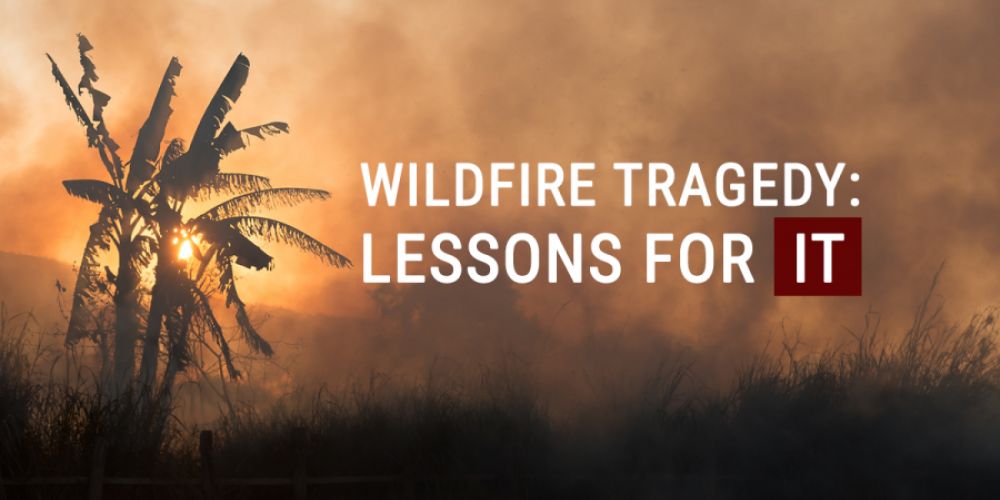
Maui wildfire alert system failure highlights critical gaps in disaster planning
COMPREHENSIVE WARNINGS, ALL SILENCED
The State of Hawaii calls its All-hazard Statewide Outdoor Warning Siren System the “largest single integrated public safety outdoor siren warning system in the world.” It has over 400 solar-powered sirens – 80 of them on the Maui archipelago – capable of alerting residents to a wide range of natural and human-caused events, such as hurricanes, tsunamis, volcanic eruptions, floods, terrorist threats, and wildfires.
The sirens are a critical part of the more broadly scaled Statewide Alert and Warning System (SAWS), which uses the Federal Emergency Management Agency’s (FEMA) Integrated Public Alert and Warning System (IPAWS), the Emergency Alert System (EAS), and Wireless Emergency Alerts (WEA). The integrated system warns the public of threats over a range of platforms, including cell phone networks and media, and is tested on the first day of each month by emergency management and civil defense agencies, as well as local radio and TV broadcasters.
Reports from wildfire victims, however, confirm that the sirens were not activated, and cell phone alerts went out late, if at all, and rather than ordering an evacuation, they simply warned of the risks of strong winds and possible fires. Amber alert-like messages – with loud alarms on recipients’ devices – were not sent.
The silence was almost by design, with Maui Emergency Management Agency Administrator Herman Andaya defending the decision to not activate the sirens. In an interview with Honolulu Star-Advertiser, he said the system is largely used for tsunamis – not wildfires – with residents trained to move to higher ground when they hear the sirens.
“Had we sounded the siren that night, we were afraid that people would have gone mauka (toward the mountain),” he said, echoing concerns that panicked residents might have instead headed straight into the flames. The siren network also included no equipment on the side of the mountain, and Andaya said residents likely wouldn’t have heard them anyway because they were inside their air-conditioned homes, surrounded by high winds that would have drowned out the sound.
A FAILURE OF TECHNOLOGY AND PROCESS
Following widespread criticism of his decision to not activate the system, Andaya resigned from his post. Hawaii’s Attorney General, Anne Lopez, has announced a comprehensive investigation into the lead-up to the fires, and the decision-making among government and emergency response resources as the situation worsened.
But the ripples from this tragedy are already racing far beyond the island state’s borders.
This isn’t a failure so much of a particular technology as it is a realization that for all the state’s advance planning, it simply wasn’t enough. The processes that led to officials on the ground deciding not to activate a critical piece of warning infrastructure were based on planning that failed to anticipate the scope of a rapidly changing environment – one permanently altered by climate change.
The system also relied heavily on components, such as cell phone networks, that lacked sufficient redundancy in the event of wildfires. For example, wireless and 911 services were compromised as the fires burned through ground equipment, forcing officials to rely on broadcast media and word of mouth.
Maui County Police Chief John Pelletier told CNN, “Nobody saw this coming. Period.”
WHERE WE GO FROM HERE
While it may be true that nobody saw this coming, it’s equally true that disaster planners in all organizations are responsible for understanding where tomorrow’s threats will come from – and planning risk mitigation around them. It’s their job to see these things coming.
This extends beyond one state, one town, and one event. Organizations everywhere would do well to learn the lessons of this event – and must crack open their DRPs to assess where they fall short.
The Maui wildfires, in particular, highlight shortcomings in a number of areas, including communication protocols, resource allocation, risk assessment, training, stakeholder integration, data backup, testing and validation. Especially worrisome is the failure to recognize the lack of redundancies in advance, and the limited scope of recurring training that potentially lulled residents, government officials, and emergency responders alike into a false sense of security.
But this also opens up opportunities for technology leaders to lead the conversation within their own organizations about the scope of disaster recovery and business continuity efforts – and what must be done to keep them relevant and robust amid a fast-evolving natural and business landscape.
In that regard, this traumatic event could lead to better future preparedness across a much broader swath of society – including the organizations where we work. But only if we allow it to, and only if we prioritize it.
THE BOTTOM LINE
There is no doubt that this is a national tragedy that will have serious implications for emergency response teams and protocols, as it should. Opportunistic technology leaders are – or should be – already asking the hard questions about their own disaster preparedness, particularly around whether the scope of their original effort is enough to accommodate current and future realities.
As robust as we think our own DRPs may be, rest assured they, like the well-intentioned plans in Maui, have their own unseen gaps. And it’s those gaps that mean the difference between a plan’s success or failure. Give us a call anytime if you’d like to brainstorm ways to mitigate your own risk and ensure your DRP is ready for whatever comes next.


